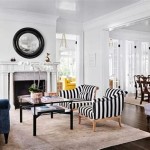Embracing Pink: A Guide to Home Decor
Pink, often associated with femininity, romance, and playfulness, is a versatile color capable of transforming any living space. It's no longer confined to nurseries or overly saccharine settings; instead, sophisticated shades and strategic application are making pink a popular choice for modern home decor. This article explores the various ways to incorporate pink into interior design, from subtle accents to bold statements, offering guidance on selecting the right shades and complementary elements.
The perception of pink has evolved significantly. Designers are increasingly using pink in unexpected ways, pairing it with contrasting colors like black, gray, and even metallic tones. This allows for creating rooms that are both visually striking and calming, depending on the chosen palette. The key lies in understanding the different shades of pink and their psychological impact, as well as how they interact with other colors and textures within the room.
Understanding the Spectrum of Pink
Pink is not a monolithic color; it exists on a spectrum ranging from blush and pastel pinks to vibrant fuchsias and deep rose hues. Each shade evokes a different feeling and complements different design styles. Blush pink, for instance, is often used to create a soft and elegant atmosphere, working well in bedrooms and living rooms. It serves as a neutral backdrop, allowing other elements in the room to stand out. Deeper shades like rose and magenta add vibrancy and personality, working particularly well in accent pieces or statement walls.
Pastel pinks, with their inherent lightness, are ideal for creating a calming and airy ambiance. These shades are often used in nurseries or children's rooms due to their association with innocence and tranquility. However, they can also be effectively incorporated into adult spaces, providing a subtle hint of color without overwhelming the room. When used in conjunction with natural light, pastel pinks can create a sense of openness and serenity.
Conversely, brighter and more saturated pinks, such as fuchsia and hot pink, are bold and attention-grabbing. These shades are best used sparingly as accent colors, preventing the room from feeling overwhelming. They can be incorporated through throw pillows, artwork, or small pieces of furniture, adding a pop of excitement and personality to the space. When using these bolder shades, it's crucial to balance them with neutral tones to create a cohesive and visually appealing design.
The undertones of pink also play a crucial role in its overall impact. Pink with warm undertones, such as peach or coral, can create a sense of warmth and coziness. These shades are particularly well-suited for rooms with cooler natural light or rooms that lack direct sunlight. Pink with cool undertones, such as mauve or dusty rose, can create a more sophisticated and elegant atmosphere. These shades work well in rooms with warmer natural light, balancing the overall tone of the space.
Ultimately, selecting the right shade of pink depends on the desired mood and the existing color palette of the room. Careful consideration of the available light, the size of the space, and the overall design style is essential for achieving a harmonious and visually pleasing result.
Incorporating Pink Through Different Decor Elements
Pink can be introduced into home decor through various elements, ranging from paint and wallpaper to furniture and accessories. The chosen method will significantly impact the overall effect, allowing for varying degrees of commitment and visual impact.
Painting a wall pink is a bold statement, but it can be incredibly effective if done correctly. Opting for a feature wall, rather than painting the entire room, is a popular approach. This allows for adding a pop of color without overpowering the space. When selecting a pink paint color, it's crucial to consider the room's lighting conditions. Lighter shades of pink can brighten up darker spaces, while deeper shades can add warmth and coziness to larger rooms. It's also advisable to test paint samples on the wall before committing to the entire room, ensuring the color is harmonious with the existing decor.
Wallpaper offers another avenue for incorporating pink, providing a wider range of patterns and textures. From subtle floral prints to bold geometric designs, pink wallpaper can add depth and visual interest to any room. Consider using wallpaper on a single wall as an accent or in smaller spaces like bathrooms or hallways. The chosen pattern should complement the overall design style of the room, creating a cohesive and visually appealing aesthetic.
Furniture is another effective way to introduce pink into home decor. A pink sofa, armchair, or ottoman can serve as a statement piece, adding a touch of personality and flair to the living room. Opting for upholstered furniture in a durable fabric is essential, ensuring longevity and ease of maintenance. Pink furniture can be paired with neutral accessories to create a balanced and sophisticated look. Alternatively, pink furniture can be combined with contrasting colors like teal or gold for a bolder and more eclectic aesthetic.
Accessories offer the most versatile and easily adaptable method for incorporating pink. Throw pillows, blankets, rugs, and artwork can all be used to add pops of pink without committing to a major renovation. These accessories can be easily swapped out or rearranged, allowing for flexibility and experimentation. Pink throw pillows can add comfort and visual interest to a sofa or bed, while a pink rug can anchor a room and define its space. Artwork featuring pink hues can add a touch of sophistication and elegance, complementing the overall design style of the room.
Regardless of the chosen method, the key to successfully incorporating pink into home decor lies in careful planning and thoughtful execution. Balancing pink with other colors, textures, and design elements is essential for creating a cohesive and visually appealing space.
Complementary Colors and Textures for Pink Decor
Pink rarely stands alone in interior design; its success relies heavily on the colors and textures it's paired with. Strategic combinations can elevate pink from a simple color choice to a key element in a sophisticated and visually balanced design scheme.
Gray is a classic and versatile pairing for pink. The coolness of gray balances the warmth of pink, creating a sophisticated and elegant atmosphere. Light gray tones, such as silver or dove gray, complement lighter shades of pink, such as blush or pastel pink. Darker gray tones, such as charcoal or slate gray, provide a striking contrast to brighter shades of pink, such as fuchsia or hot pink. The combination of pink and gray works well in various rooms, from bedrooms to living rooms, creating a refined and timeless aesthetic.
Gold and brass accents can add a touch of luxury and glamour to pink decor. These metallic tones complement the warmth of pink, creating a sense of opulence and sophistication. Gold or brass picture frames, light fixtures, or decorative objects can be used to enhance the overall aesthetic of the room. The combination of pink and gold or brass works particularly well in formal living rooms or dining rooms, creating a glamorous and inviting space.
Green offers a refreshing and natural contrast to pink. The combination of pink and green can evoke a sense of springtime and renewal, bringing a touch of the outdoors inside. Soft shades of green, such as sage or mint green, complement lighter shades of pink, such as blush or pastel pink. Deeper shades of green, such as emerald or forest green, provide a striking contrast to brighter shades of pink, such as fuchsia or hot pink. The combination of pink and green works well in various rooms, from bedrooms to kitchens, creating a vibrant and harmonious atmosphere.
Texture also plays a significant role in complementing pink decor. Soft and plush textures, such as velvet or faux fur, enhance the luxurious and comforting aspects of pink. Rough and natural textures, such as linen or jute, provide a grounding and earthy contrast to pink, creating a balanced and visually interesting space. Incorporating a variety of textures adds depth and dimension to the room, enhancing its overall appeal.
Wood tones, whether light or dark, provide a natural and grounding element to pink decor. Light wood tones, such as birch or maple, complement lighter shades of pink, creating a bright and airy atmosphere. Dark wood tones, such as walnut or mahogany, provide a rich and grounding contrast to brighter shades of pink, creating a sophisticated and elegant space. The combination of pink and wood tones works well in various rooms, from bedrooms to living rooms, creating a warm and inviting atmosphere.
The strategic use of complementary colors and textures is crucial for creating a cohesive and visually balanced pink decor scheme. By carefully considering the interaction of colors and textures, one can create a space that is both stylish and comfortable, reflecting personal taste and preferences.

Pin On Room Stuff

10 Ways To Add More Pink In Your Home The Seattle Times

Genuine Pink Interior Design How To Add This Trend Color Your Home Article On Thursd

Chic And Affordable Blush Pink Home Decor Fashion Finds We Re The Joneses

Blush Pink Living Room Decor How To Try Out A New Style

Hop On The Barbiecore Trend With Pink Home Décor Items

Pink Stuff Anthony Baratta Living Room Decor Cute

Blush Pink Home Decor

Pink Home Decor Accent Pieces

82 Home Decor Accessories Ideas







